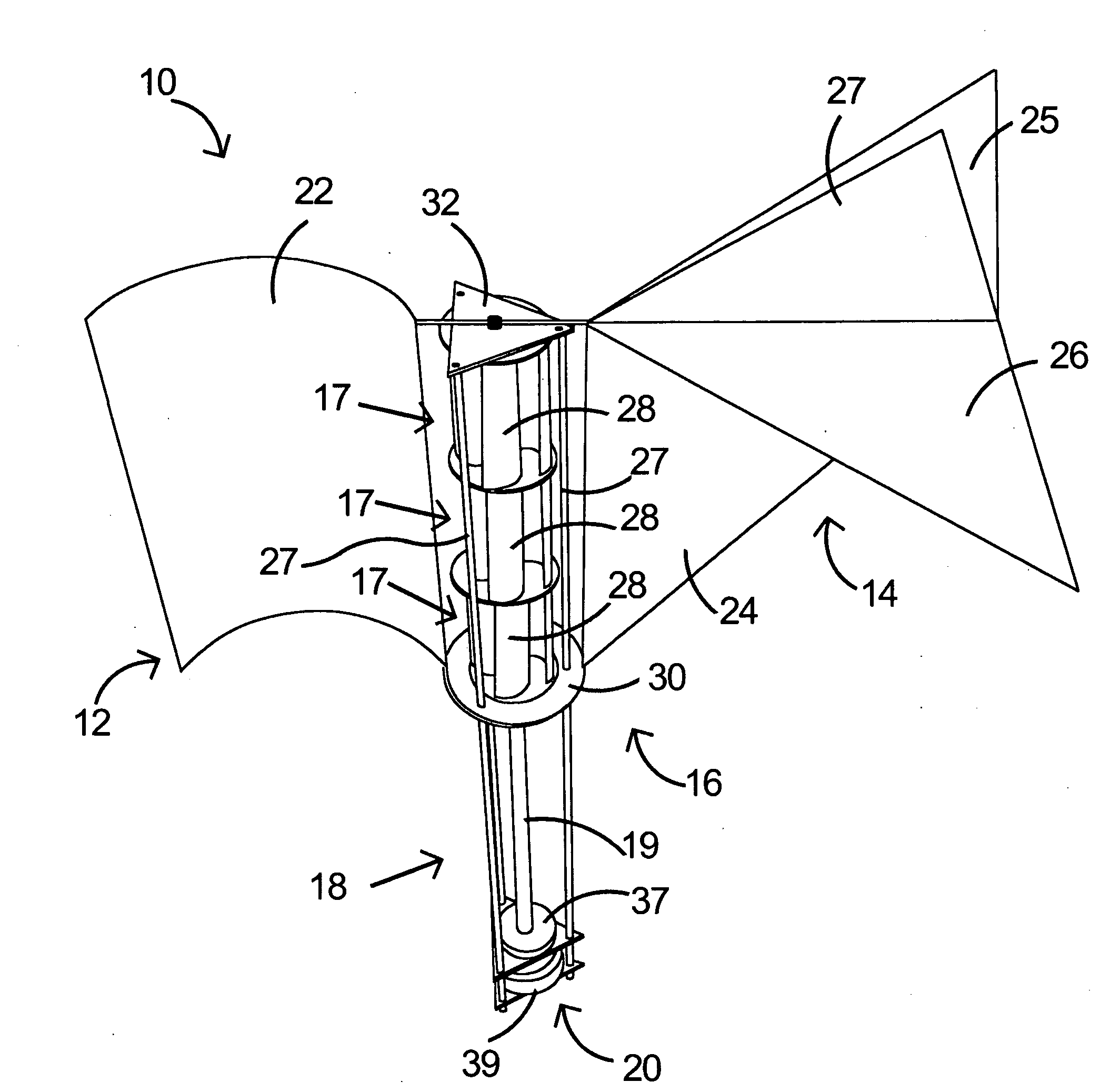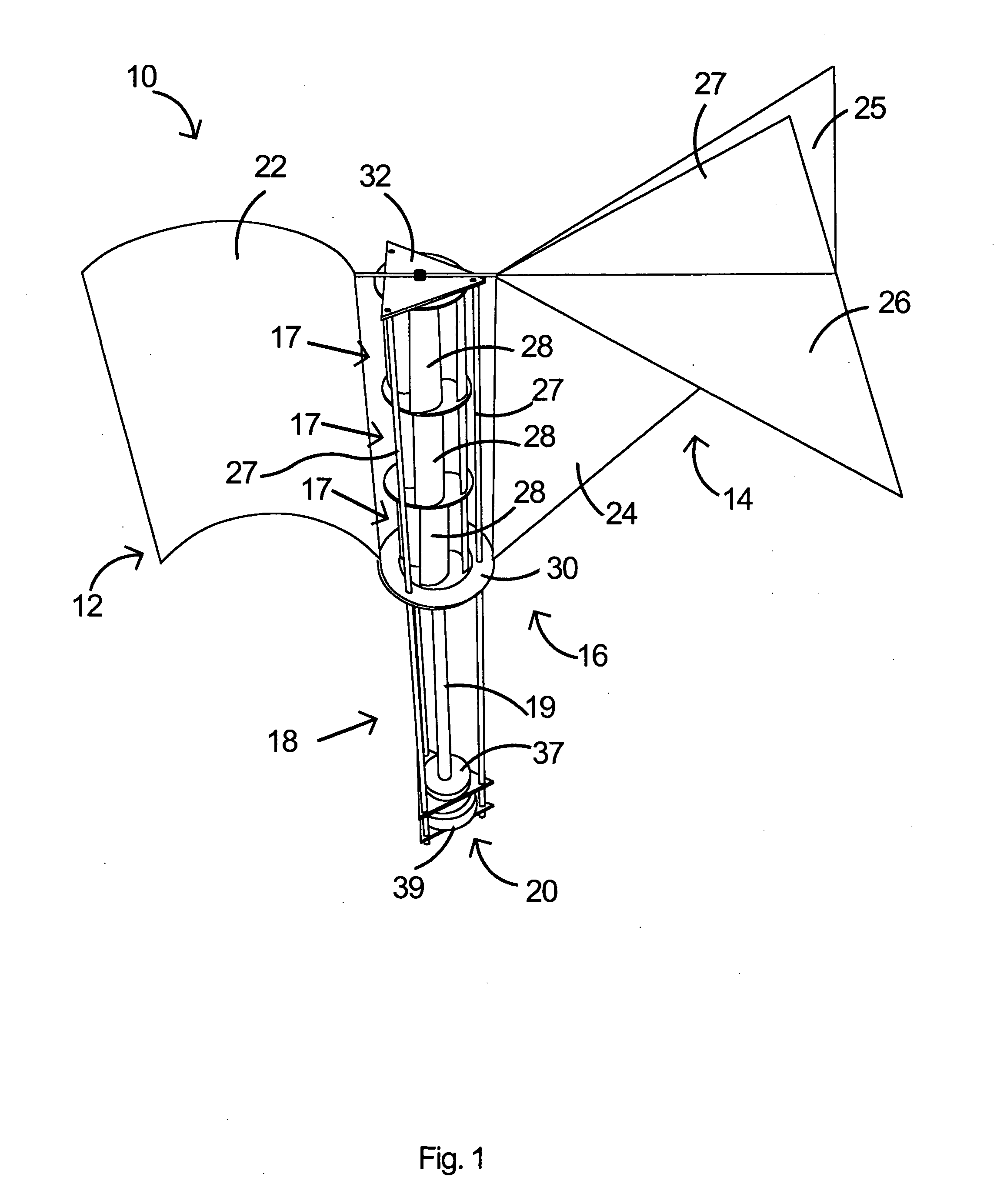Multi-Axis Wind Turbine With Power Concentrator Sail
a multi-axis, wind turbine technology, applied in the direction of electric generator control, renewable energy generation, greenhouse gas reduction, etc., can solve the problems of obscuring the landscape, needing an even horizontal air inflow, danger to birds and air traffic, etc., to prevent the disruption of rotation, reliable and effective
- Summary
- Abstract
- Description
- Claims
- Application Information
AI Technical Summary
Benefits of technology
Problems solved by technology
Method used
Image
Examples
Embodiment Construction
[0035]FIGS. 1 and 11 show a vertical axis wind turbine (VAWT) 10 as seen from the exterior thereof, having a front sail 12, a trailing or tail sail 14, a turbine assembly 16 (e.g. Savonius turbines), and electricity generator section 20, all on a base or stand 18. The turbine assembly 16 is shown having a plurality (3) of wind vane assemblies 17. It should be appreciated, however, that the turbine assembly 16 may have only one vane assembly 17, two or more that three vane assemblies 17 as desired. The incident wind is captured and directed into the rotor vanes 28 of each vane assembly 17 via the front sail 12. The position of the front sail 12 with respect to the wind is maintained by the tail sail 14. The front sail 12 is characterized by a curved panel 22 that directs the wind into the vane assemblies 17. The tail sail 14, as best seen in FIG. 7, includes a front panel 24, left and right cross panels 26, 25 and vertical panel 27. This configuration is similar to the tail of an air...
PUM
 Login to View More
Login to View More Abstract
Description
Claims
Application Information
 Login to View More
Login to View More - R&D
- Intellectual Property
- Life Sciences
- Materials
- Tech Scout
- Unparalleled Data Quality
- Higher Quality Content
- 60% Fewer Hallucinations
Browse by: Latest US Patents, China's latest patents, Technical Efficacy Thesaurus, Application Domain, Technology Topic, Popular Technical Reports.
© 2025 PatSnap. All rights reserved.Legal|Privacy policy|Modern Slavery Act Transparency Statement|Sitemap|About US| Contact US: help@patsnap.com



